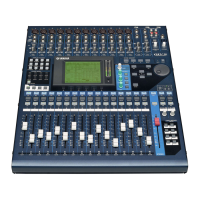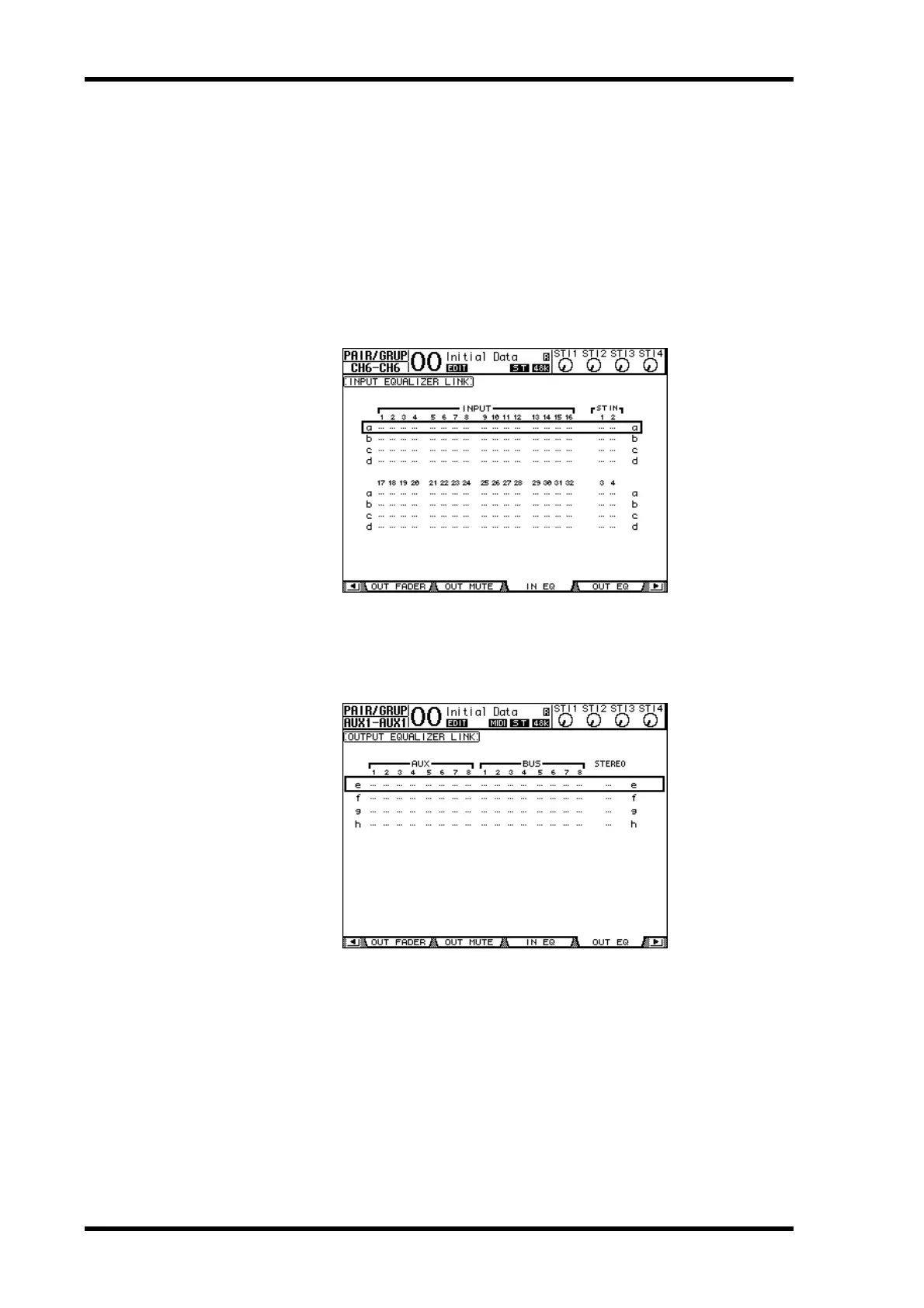
 Loading...
Loading...
Do you have a question about the Yamaha 01V96 and is the answer not in the manual?
| Channels | 40 |
|---|---|
| Mic Preamps | 16 |
| Bit Depth | 24-bit |
| MIDI | Yes |
| EQ Bands | 4-band Parametric |
| Aux Sends | 8 |
| A/D-D/A Conversion | 24-bit |
| Effects Processors | 4 |
| Power Supply | Internal |
| Type | Digital |
| Sample Rate | 44.1 kHz, 48 kHz |
| Effects | Yes |
| USB | No |
| Weight | 33 lbs |
| Inputs - Other | 8 digital |
| Outputs - Digital | AES/EBU, S/PDIF |
| Computer Connectivity | No |
| Sampling Rate | 44.1 kHz, 48 kHz |
| Internal Processing | 32-bit |
| Dynamic Processing | Gate, Compressor, Limiter |
| Digital I/O | AES/EBU, S/PDIF |
| Analog I/O | XLR, TRS |
| Outputs - Main | 2 |
Basic precautions to avoid electrical shock, damage, fire, or other hazards.
Basic precautions to avoid physical injury or damage to the device or property.
Details on controlling external devices using the 01V96's SELECTED CHANNEL section.
Details on the physical layout and components of the control surface.
Description of the connectors and sections on the rear panel.
Details on buttons for accessing various display pages (SCENE, DIO/SETUP, MIDI, etc.).
Details on buttons for selecting Input Channel, Master, or Remote layers.
Details on PAN control and EQ band controls (HIGH, MID, LOW).
Details on Parameter wheel, ENTER, DEC/INC, and cursor buttons.
Details on 2TR IN/OUT DIGITAL, ADAT IN/OUT connectors.
Details on the POWER ON/OFF switch and AC IN connector.
Explains the various items indicated on the 01V96's top panel display.
Details on rotary controls, faders, buttons, and parameter boxes.
Explains the four layers and how they determine control functions.
Describes how to connect the 01V96 for an analog mixing system.
Explains how input signals are patched to input channels by default.
Guides through connecting the 01V96 to a digital multitrack recorder for recording.
Instructions for setting input levels for recording musical instruments.
Explains setting levels and panpots for Input and ST IN channels.
Details on Aux Out parameters and their signal flow.
Instructions on adjusting Aux Send levels from the display.
Explains the Surround Pan function and its modes (3-1, 5.1, 6.1).
Explains grouping faders, ON buttons, and linking EQ/compressor parameters.
Overview of the 01V96's four internal multi-effects processors.
Explains what Scene memories are and how they store mix and effects settings.
Lists the parameter settings that are stored within a Scene.
Instructions on storing and recalling Scenes using the top panel buttons.
Details on Global Recall Safe, SAFE, MODE, and RECALL SAFE CHANNEL.
Overview of the seven libraries available for storing and recalling settings.
Details on storing and recalling Input/Output Channel parameter settings.
Explains the Remote function for controlling external DAWs and MIDI devices.
Instructions for connecting the 01V96 to a computer for Pro Tools control.
Describes how to recall and use factory-preset MIDI Remote settings.
Overview of MIDI messages supported by the 01V96.
Instructions for configuring MIDI ports for message transfer.
Instructions on assigning 01V96 parameters to MIDI Control Changes.
Instructions on changing default channel names for inputs and outputs.
Instructions on creating a custom layer by combining channels.
Instructions on assigning functions to the USER DEFINED KEYS buttons.
Details on enabling/disabling Operation Lock with a password.
Details the specifications for the analog input connectors.
Details the specifications for the analog output connectors.
Lists default assignments of 01V96 parameters to MIDI Control Changes.